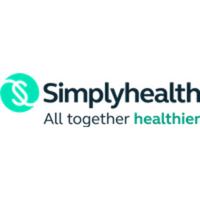Why changing workplace demographic are driving flexible benefits
Driving this demand are changes in workplace demographics. An ageing population and the removal of the default retirement age have led to multigenerational workforces consisting of employees ranging from 16 to upwards of 65 years of age. This has brought an interesting challenge for rewards and benefits professionals. How do you create a rewards package that caters for so many people at different life stages and with different lifestyles?

The answer for many organisations is flexible benefits. A one size fits all package no longer works. Half (51%) of corporates currently offer all their benefits on a flexible basis according to research carried out by Simplyhealth last June.
By allowing employees to pick and choose their benefits, you are in better position to meet their needs. For example a graduate fresh out of university is likely to have different needs to somebody approaching retirement. Employees with children may opt for childcare vouchers whereas employees who are active and play sport may select a benefit such as a health cash plan.
There is growing demand from employees too, with 91% of employees surveyed believing that it is better to offer benefits on a flexible basis according to the research.
Healthcare as part of a flexible benefits package
The research showed that nearly two thirds of employees see health and wellbeing benefits as one of the top three most appealing benefits with 42% of employees feeling that their employer should do more to support their health and wellbeing.
Health and wellbeing benefits are also valued by employers with 58% of organisations ranking them as one of the top three most appealing benefits, second only after compulsory pensions. 55% of corporates currently offer these type of benefits with 58% of companies offering benefits to maximise employee health and wellbeing.
For employees to really engage with the benefits on offer, it is important to offer benefits that can be used regularly. Some health and wellbeing benefits such as private medical insurance or critical illness cover can act as safety nets if something was to go wrong, but employees would hope that they wouldn’t need to use these benefits. In contrast benefits such as health cash plans are designed to be used on a regular basis.
Health cash plans can act a preventative measure to stop issues developing into something more serious by allowing employees to claim money back on the cost of healthcare treatment such as physiotherapy.
For example if an employee was suffering from back pain, they maybe more likely to visit a physiotherapist if they know that they can claim money back towards the cost.
The REBA/JLT Employee Benefits Shifts Research 2016 showed that the number of employers looking to offer health cash plans via flexible benefits is set to increase by 54.5% in 2016.
Employee engagement and take up
It’s not just enough to offer a set of benefits and expect employees to engage with them. Engagement with benefits is the key to driving take up and proving that the benefits on offer are not only valued by employees but are also providing an ROI. Simplyhealth research has found that employees spend only seven minutes per annum selecting their benefits.
With the shop window for flexible benefits often only open for a month at a time, it’s important for providers to engage with employees throughout the year. For example a healthcare provider can provide health and wellbeing information and updates throughout the year, acting as a reminder of the benefits available to the employee.
Changes in workplace demographics have accelerated the growth of flexible benefits and there is demand from employees to see benefits offered flexibly. There is also demand for health and wellbeing benefits, which are not only popular among employees but can also provide employers benefits. Flexible benefits are now on the agenda and look like they are here to stay.
This article was provided by Simplyhealth.
Supplied by REBA Associate Member, Simplyhealth
Our health plans make it easy for people to maintain their health&wellbeing.







